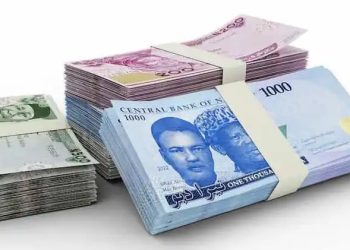As of March 2024, nearly three years post-launch, Nigeria’s Central Bank Digital Currency (CBDC), the eNaira, constitutes less than 1% of the country’s total currency in circulation. The latest quarterly statistical bulletin from the Central Bank of Nigeria (CBN) reports that out of the N3.87 trillion in circulation, the eNaira accounts for only N13.98 billion, translating to approximately 0.36%.
This figure highlights the slow adoption of the eNaira, despite a significant increase of 1,896% from the N700.75 million recorded in October 2021, the month of its introduction. The eNaira was created as part of Nigeria’s effort to enhance financial inclusion and support the CBN’s cashless policy.
Efforts to Boost Adoption
The CBN has rolled out several initiatives to encourage the use of the eNaira. These include the introduction of the eNaira Speed Wallet app, available on both Google Play Store and iOS Store, and a USSD code (*997#) to facilitate wallet creation for those without smartphones.
The eNaira wallets are categorized into three tiers for individuals:
1. Bronze Wallet: Requires only a mobile number.
2. Silver Wallet: Requires a National Identification Number (NIN) and mobile number.
3. Gold Wallet: Requires the user’s BVN and bank details.
For businesses, the registration process demands more comprehensive information, including TIN, RC number, and company account details.
Partnerships and Incentives
The CBN has partnered with banks, fintech firms, and merchants to enhance the eNaira’s adoption. Initially, the central bank waived transaction fees for eNaira users until the end of 2023. It also set a minimum capital requirement of N50 million for eNaira service providers and issued guidelines to ensure compliance with anti-money laundering and counter-terrorism financing measures.
In a bid to further promote the digital currency, the CBN has enabled the eNaira as a payment option for diaspora remittances, hoping to streamline and reduce the cost of these transactions.
Challenges and the Path Forward
Despite being the world’s second CBDC to launch, the eNaira has faced challenges in gaining widespread acceptance. The CBN continues to implement measures to overcome these hurdles, aiming to integrate the eNaira more deeply into Nigeria’s financial ecosystem.
For the eNaira to achieve its intended impact on financial inclusion and the cashless policy, the CBN will need to address the barriers to its adoption, including public awareness and trust in digital financial services.
Bottom Line
While the eNaira’s current circulation remains minimal compared to traditional currency, ongoing efforts by the CBN and its partners may yet see an increase in its adoption and utility. As the digital currency landscape evolves, the eNaira’s role in Nigeria’s economy will continue to be a critical area of focus.











